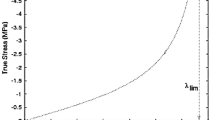Abstract
The mechanical properties of elastomers can change significantly due to air temperature variations. In particular, prolonged exposure to subzero temperatures can result in rubber crystallization, with a considerable increase in the shear stiffness of the material. As a result, the seismic response of structures with elastomeric isolators can be strongly influenced by air temperature. Current seismic codes, indeed, require an upper and lower bound analysis, using suitable modification factors, to account for the changes in the cyclic behavior of elastomeric isolators due to air temperature variations. In this study, the sensitivity of the cyclic behavior of elastomeric isolators to air temperature variations is investigated based on the experimental results of an extensive test program on six different elastomeric compounds for seismic isolators, characterized by a shear modulus ranging from 0.5 to 1.2 MPa at 100% shear strain and 20°C. The cyclic tests have been performed on small-size specimens, subjected to shear strain amplitudes and frequency of loading typical for elastomeric seismic isolators, at seven different air temperatures, ranging from 40 to −20°C. The effects of rubber crystallization due to prolonged exposure to low-temperatures have been also investigated. A finite element model for the evaluation of the temperature contour map inside a full-size elastomeric isolator exposed to low air temperatures has been also developed. In the paper, the experimental outcomes are compared with the modification factors provided by the current seismic codes to account for the temperature effects on the mechanical properties of elastomeric isolators.
Similar content being viewed by others
References
AASHTO (American Association of State Highway and Transportation Officials) (1999) Guide specifications for seismic isolation design. Washington, DC
ANSYS: (2009) Academic Mechanical Research (ver. 12.0). ANSYS Inc, Canonsburg
ASTM (American Section of the International Association for Testing Materials D4014-89): (1989) Standard specification for plain and steel-laminated elastomeric bearings for bridges. West Conshohocken, Pennsylvania
ASTM (American Section of the International Association for Testing Materials D832-07): (2007) Standard practice for rubber conditioning for low temperature testing. West Conshohocken, Pennsylvania
Bhagawan SS, Sadhan KD (1988) Mechanical properties and fracture surface morphology of clay-filled thermoplastic 1,2-polybutadiene rubber at elevated temperatures. Polym Plast Technol Eng 27(1): 37–60
Boyce MC, Montagout EL, Argon AS (1992) The effects of thermomechanical coupling on the cold drawing process of glassy polymers. Polym Eng Sci 32(16): 1073–1085
CEN (European Committee for Standardisation (EN1998-1)) (2005) Eurocode 8: design of structures for earthquake resistance—Part 1: general rules. seismic actions and rules for buildings, Brussels
CEN (European Committee for Standardisation (EN1998-2)) (2006) Eurocode 8: design of structures for earthquake resistance—Part 2: bridges. Brussels
Fuller KNG, Gough J, Thomas AG (2004) The effect of low temperature crystallization on the mechanical behaviour of rubber. J Polim Sci 42(11): 2181–2190
Gent AN, Lindley PB (1959) Internal rupture of bonded rubber cylinders in tension. Roy Soc Lond Proc Ser A 249(1257): 195–205
George PM (2010) Effect of fault rupture characteristics on near-fault strong ground motions. Bull Seismol Soc Am 100(1): 37–58
Harwood JAC, Schallamach A (1967) Dynamic behaviour of rubber during large extensions. J Appl Polym Sci 11(10): 1835–1850
HITEC (Highway Innovative Technology Evaluation Center) (1998) Evaluation findings for skellerup base isolation elastomeric bearings, USA
Kelly TE (1992) Skellerup industries lead rubber isolation bearings: experimental properties. Holmes Consulting Group, Wellington
Lion A (1997) On the large deformation behaviour of reinforced rubber at different temperatures. J Mech Phys Solids 45(11/12): 1805–1834
Long JE (1974) Bearings in structural engineering. Newnes-Butterworths, London, p 162
Maniatakis CHA, Taflampas IM, Spyrakos CC (2008) Identification of near-fault earthquake record characteristics. In: The 14th world conference on earthquake engineering Beijing, China, October 12–17
Mc Adams WH (1964) Transmission de la chaleur. 2. Dunod, Paris
Murray RM, Detender JD (1961) First and second order transitions in neoprene, Rubber chemistry and technology. Division of Rubber Chemistry of the American Chemical Society 34(2): 668–685
Naeim F, Kelly JM (1999) Design of seismic isolated structures. Wiley, New York
Nagdi K (1993) Rubber as an engineering material: guideline for users. Hanser Publisher, Munich, p 322
NTC—Norme Tecniche per le Costruzioni (2008) Decreto Ministeriale 14-01-2008, Rome (in Italian)
Roeder CW, Stanton JF, Feller T (1990) Low-temperature performance of elastomeric bearings. J Cold Reg Eng 4(3): 113–132
Skinner RI, Robinson WH, McVerry GH (1993) An introduction to seismic isolation. Wiley, New York
Smith LP (1993) The language of rubber: an introduction to the specification and testing of elastomers. Butterworth-Heinemann, Oxford
Stevenson A (1988) Low temperature crystallization. In: Roberts AD (eds) Natural rubber science and technology (Chap. 18). Oxford University Press, Oxford, pp 853–891
Taylor AW, Lin AN, Martin JW (1992) Performance of elastomers in isolation bearings: a literature review. Earthq Spectra 8(2): 279–304
Thomas AG (1983) The design of laminated bearings—I. In: Proceedings of international conference on natural rubber for earthquake protection of buildings and vibration isolation. Kuala Lumpur, Malaysia, pp 229–246
Thompson ACT, Whittaker AS, Fenves GL Mahin SA (2000) Property modification factors for elastomeric seismic Isolation bearings. In: The 14th world conference on earthquake engineering, October 12–17, 2008, Beijing, China
Treloar LRG (1975) The physics of rubber elasticity. 3. Clarendon Press, London
Yakut A, Yura JA (2002) Evaluation of low-temperature test methods for elastomeric bridge bearings. J Bridge Eng 7(1): 50–56
Yakut A, Yura JA (2002) Parameters influencing performance of elastomeric bearings at low temperature. J Struct Eng 128(8): 986–994
Author information
Authors and Affiliations
Corresponding author
Additional information
An erratum to this article can be found at http://dx.doi.org/10.1007/s10518-011-9253-7
Rights and permissions
About this article
Cite this article
Cardone, D., Gesualdi, G. & Nigro, D. Effects of air temperature on the cyclic behavior of elastomeric seismic isolators. Bull Earthquake Eng 9, 1227–1255 (2011). https://doi.org/10.1007/s10518-011-9244-8
Received:
Accepted:
Published:
Issue Date:
DOI: https://doi.org/10.1007/s10518-011-9244-8




